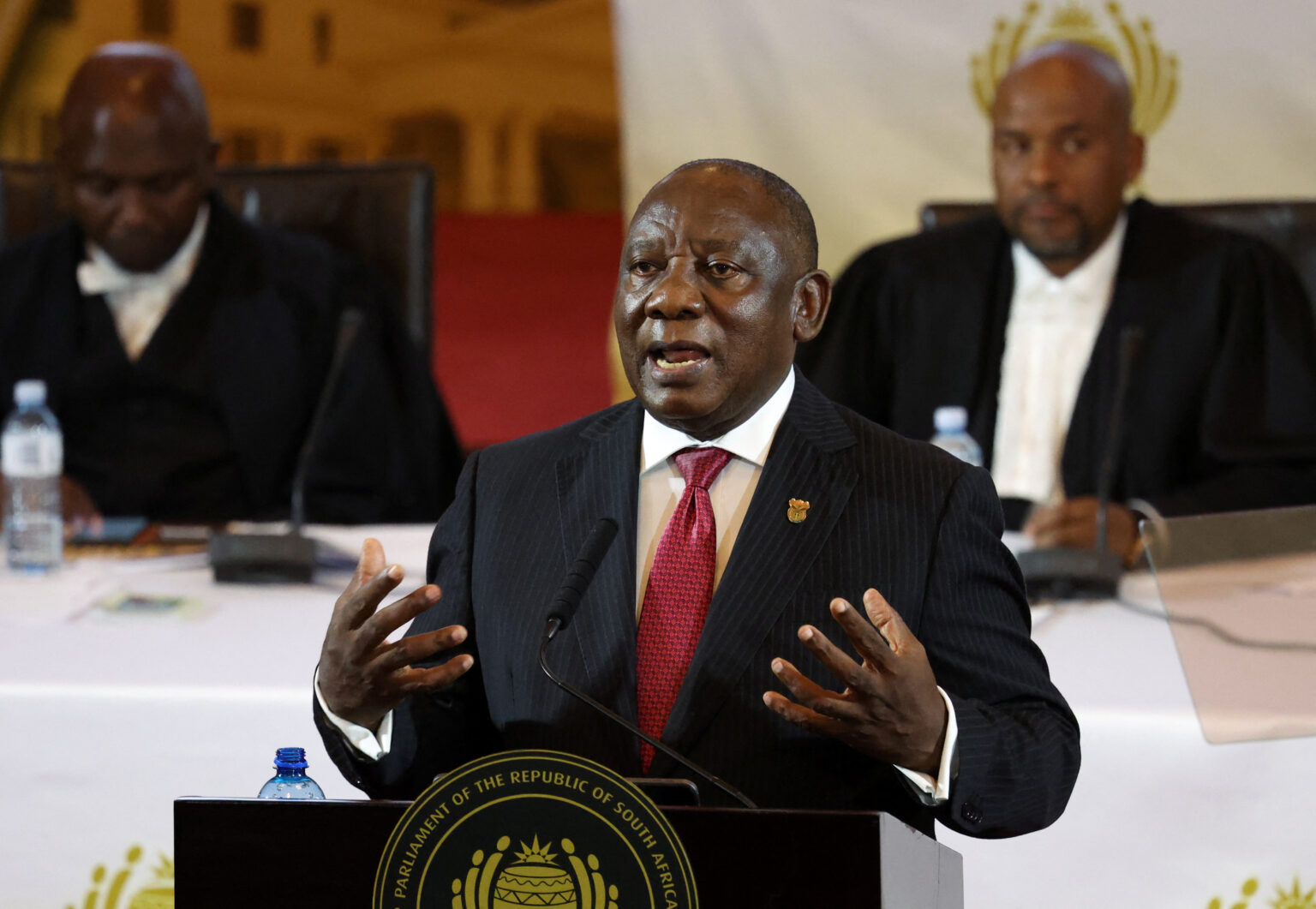- The energy crisis in South Africa has significantly impacted the nation’s economic growth, potentially reducing it by up to 3.2 percentage points in 2022.
- President Cyril Ramaphosa declares that the end of load shedding in South Africa is “finally within reach.”
- This president’s assertion is a ray of hope for millions of citizens who have endured the disruptive effects of load shedding for far too long.
South Africa has long grappled with the scourge of load shedding, a term that has become synonymous with power cuts and energy instability.
However, this week, President Cyril Ramaphosa during his 2024 State of the Nation Address (SONA) sparked optimism across the continent’s most advanced economy, suggesting that an end to frequent load shedding may finally be within reach.
President Ramaphosa’s Optimistic Proclamation
During his SONA in Cape Town, President Ramaphosa expressed confidence that South Africa is on the brink of overcoming its energy challenges. He declared that the end of load shedding is “finally within reach,” signalling a potential turning point in the nation’s energy landscape.
This assertion is a ray of hope for millions of citizens who have endured the disruptive effects of load shedding for far too long.
The energy crisis in South Africa has significantly impacted the nation’s economic growth, potentially reducing it by up to 3.2 percentage points in 2022. This trend is expected to continue, with output likely to be subdued until at least early 2024, as reported by the country’s central bank.
Power cuts, locally known as load shedding, are frequently implemented to safeguard the grid from collapse due to the inability of utility provider Eskom to meet demand with its ageing and poorly maintained plants.
These regular outages can last for as long as 12 hours a day, exacerbating the challenges posed by the energy crisis in South Africa.
Read also: Is power rationing the new reality for Tanzania?
Reforms and Efforts to Combat Load Shedding
President Ramaphosa outlined the government’s multifaceted approach to addressing the energy crisis in South Africa. Key reforms include initiatives to reform the energy system, enhance infrastructure, and attract private investment in transmission projects.
President Ramaphosa noted that his administration has rolled out a set of reforms, empowering the private sector to channel investments in the country’s energy production.
At the moment, over 120 new private energy projects are under development. “These are phenomenal developments that are driving the restructuring of our electricity sector in line with what many other economies have done to increase competitiveness and bring down prices,” the President said.
Through these interventions, “we are confident that the worst is behind us and the end of load shedding is finally within reach. But we are not stopping there,” the President explained.
Furthermore, plans are underway to construct 14,000 kilometres of new transmission lines, representing a significant step towards integrating renewable energy sources and bolstering the reliability of the national grid.
Beyond the immediate goal of ending load shedding, President Ramaphosa highlighted the broader benefits of the country’s energy reform. These reforms are expected to improve South Africa’s logistics system, enhance water security, and stimulate job creation.
By tackling the root causes of energy instability, the government aims to lay the foundation for sustained economic growth and prosperity.
Read also: Africa will need pragmatism, not idealism, to achieve a just energy transition
Persistent Challenges and Roadblocks
Despite the optimism surrounding President Ramaphosa’s remarks, challenges persist on the road to South Africa’s energy stability. Security services provider GardaWorld has projected that South Africa may remain susceptible to regular load shedding through mid-2024 and beyond.
Issues such as unplanned unit breakdowns, criminal sabotage, and corruption continue to hamper efforts to rehabilitate the national grid.
The consequences of load shedding extend far beyond inconvenience, with significant implications for businesses, infrastructure, and security for businesses and individuals as well.
Extended power cuts can disrupt commercial activities, impair essential services, and compromise security protocols. Moreover, the reliability of transportation networks and access to basic amenities such as water and fuel are jeopardized during load-shedding periods.
Navigating Towards Energy Stability
While the end of load shedding may be on the horizon, South Africa must navigate a complex landscape marked by challenges and uncertainties. President Ramaphosa’s vision for energy reform offers a beacon of hope, but concerted efforts from government, industry, and civil society will be essential to realizing this vision.
By addressing the root causes of energy instability and fostering a culture of innovation and resilience, South Africa can pave the way towards a future characterized by energy security and economic prosperity.
